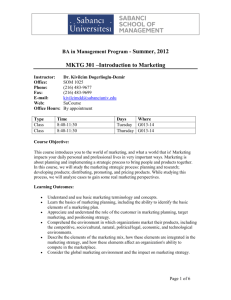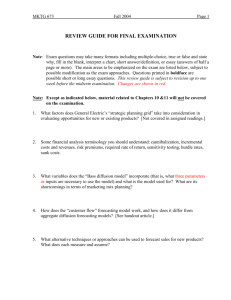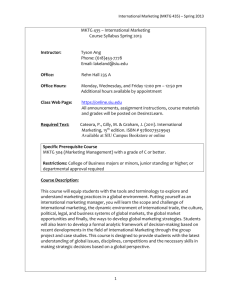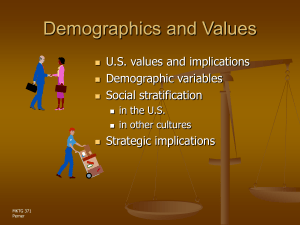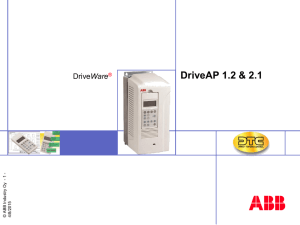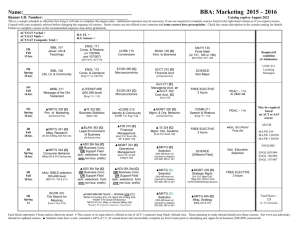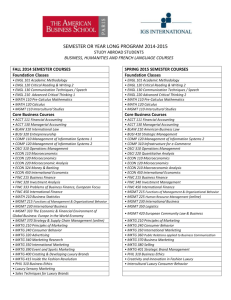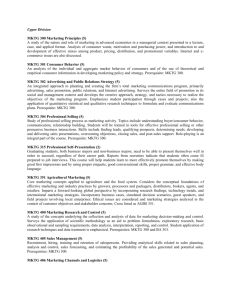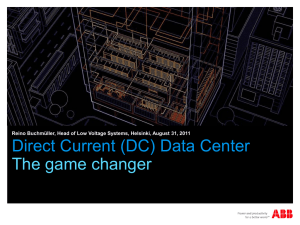04_B2B_HO__Customer_Value_5_Sept_2013
advertisement
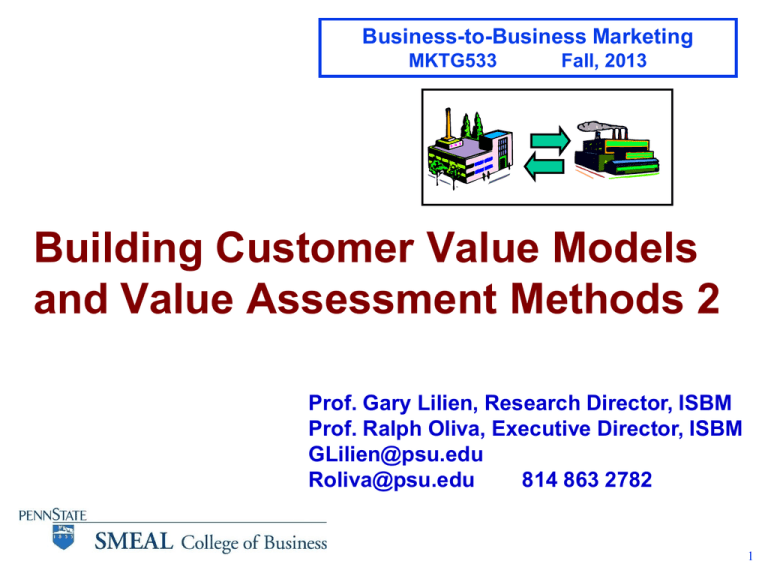
Business-to-Business Marketing MKTG533 Fall, 2013 Building Customer Value Models and Value Assessment Methods 2 Prof. Gary Lilien, Research Director, ISBM Prof. Ralph Oliva, Executive Director, ISBM GLilien@psu.edu Roliva@psu.edu 814 863 2782 1 Commercializing the Kunst 1600 Dry Piston Vacuum Pump 1. What are the major, quantifiable value and price elements associated with the Kunst 1600? 2. What additional value placeholders, elements not presently quantified, merit consideration in your value model? 3. Construct a customer value model for the Kunst 1600 in the residential AC, home refrigerator, and light commercial refrigerator repair market segments. 4. Using your value model, select a target market segment(s) for commercialization efforts. Justify your choice. 5. Write a value proposition for the Kunst 1600 for the target market(s). Mktg 533 2013- Value, Session 4 2 3M Example: Traction Wrap • TM The following slides outline the thought process 3M implemented to conceptualize value and how it is applied in a web-based environment for its Tractionwrap product. Tools from George Cressman – Strategic Pricing Group: EVE® Value Analysis Template •Competitive Alternative: •Value •Feature •Benefit Driver •Positive Differential Value •Value Formula •Inputs and Sources •Differential Value •Negative Differential Value TM •Total Differential Value © 2009, Strategic Pricing Group: George Cressman 4 4 TM © E. Maier - 2000 TM © E. Maier - 2000 TM © E. Maier - 2000 TM © E. Maier - 2000 TM © E. Maier - 2000 How to Communicate Value??? TM 10 Lincoln Electric…Guaranteed Cost Reduction Program See www.lincolnelectric.com TM TM TM Total Customer Value = Price/Performance Functional Value (What does this product do for me?) + Supplier/Service Value Advertising Selling Service Efforts What does the product mean to me? (What is the insurance? service? psychological? value of the product or supplier?) 14 Customer Needs and Customer Value Measurement Customer Needs and Buying Process Behaviors Ignore Present State Postpone Functional Perceived and Economic Needs and Psychological Needs Desired State Engage in Purchase Process •Search for options •Evaluate options •Choose option •Purchase Option •Use Option Motivation Customer Value Measurement Approaches Objective Measures of Value Perceptual Measures of Value Behavioral Measures of Value Mktg 533 2013- Value, Session 4 15 ME Tools and the STP Process 16 Choice Models 1. Observe choice (Buy/not buy direct marketers Brand bought packaged goods, ABB) 2. Capture related data • demographics • attitudes/perceptions • market conditions (price, promotion, etc.) 3. Link 1 to 2 via “choice model” model reveals importance weights of characteristics 17 Using Choice Models Choice u u u u Model Inputs Past purchases Market conditions (prices, etc.) Customer attitudes (surveys) Etc. Choice Model Outputs u Purchase probability BY CUSTOMER 18 Choice Modeling Saved ABB Electric • Issue: ABB was attempting to penetrate a market dominated by GE, Westinghouse and McGraw Edison when demand was forecast to drop by over 50% • Approach: Used Choice models and targeted “switchable customers” to reallocate marketing effort. ABB/Choice Model Idea Segment/Target on the basis of customer probability of choice— 1. Loyal to us 2. Loyal to competitor 3. Switchables: loseable/winnable customers Switchability Segmentation Loyal to Us Winnable Customers (business to gain) Losable Loyal to Competitor Current Product-Market by Switchability Q: Where should your marketing efforts be focused? Q: How can you segment the market this way? Mktg 533 2013- Value, Session 4 21 Impact at Annual Changes in Sales by District and by Customer Group 1 Year After Implementation Customer Group Our brand loyal Winnable Loseable Competitor’s brand loyal Total District One Two Three +2% +26% +16% +3% +18% +8% +3% –9% –18% –4% –3% –4% +18% +12% –10% Note: District 3 did not implement the model-based approach. Customer Needs and Customer Value Measurement Customer Needs and Buying Process Behaviors Ignore Present State Postpone Functional Perceived and Economic Needs and Psychological Needs Desired State Engage in Purchase Process •Search for options •Evaluate options •Choose option •Purchase Option •Use Option Motivation Customer Value Measurement Approaches Objective Measures of Value Perceptual Measures of Value Behavioral Measures of Value Mktg 533 2013- Value, Session 4 23 Perceptual Value Assessment Options •Unconstrained Attribute Valuation “On a 1-7 scale, please rate the importance of on-time delivery” – Strengths??? Weaknesses??? •Constrained/Trade-Off Valuation “Allocate 100 points across these offerings in a way that reflects your preference” “How much more/less would you be willing to pay for offer A vs Offer B?” – Strengths??? Weaknesses??? 24 Most Widely Used Trade-Off Method: Conjoint Analysis A way to understand and evaluate how a customer makes tradeoffs between various product attributes. Yields the value (utility) provided to a customers by each potential feature of a product. . 25 Mktg 533 2013- Value, Session 4 26 Summary Companies profit from C’ing Customer Value. Several ways to assess value. Make knowledge of customers an investment, NOT an expense. You MUST Calculate value to Create Value before you Claim Value. Mktg 533 2013- Value, Session 4 27 Amscat Corp…. 1. How would you define the problem? 2. Build a Decision Process Map and a Benefit Stack-Decision-Maker Stack for Amscat.—include measurement for Iron, measurement for CCE, differences in price/risk tradeoffs. 3. If you were an outside vendor, what would you have to do to get business at Amscat? 4. What actions do you recommend for Amscat's Corporate Director of Procurement? Insight Case: Wed Sept 11 28 Decision Process Map Decision Makers Process Stage Decision Makers Decision Makers Process Stage Process Stage Process Stage Process Stage 29 Mktg 533 2013- Value, Session 4
